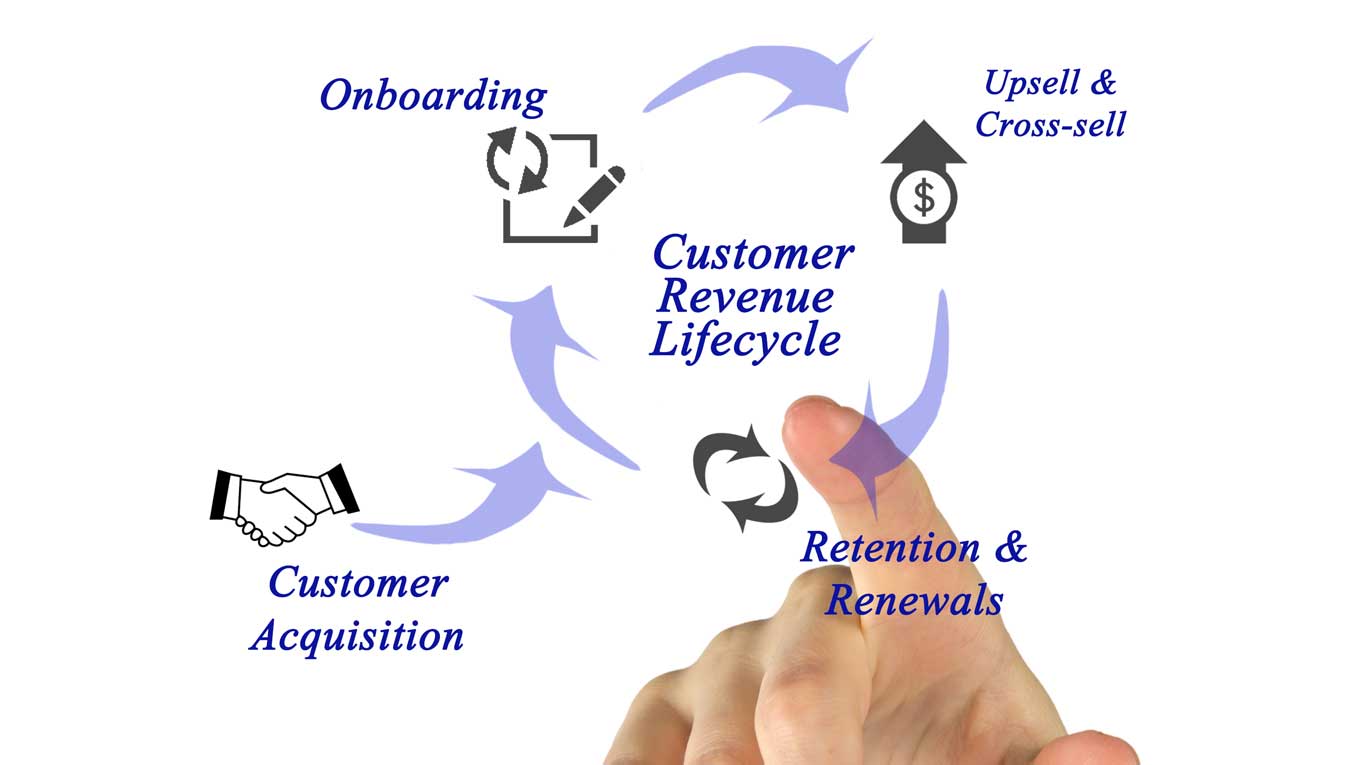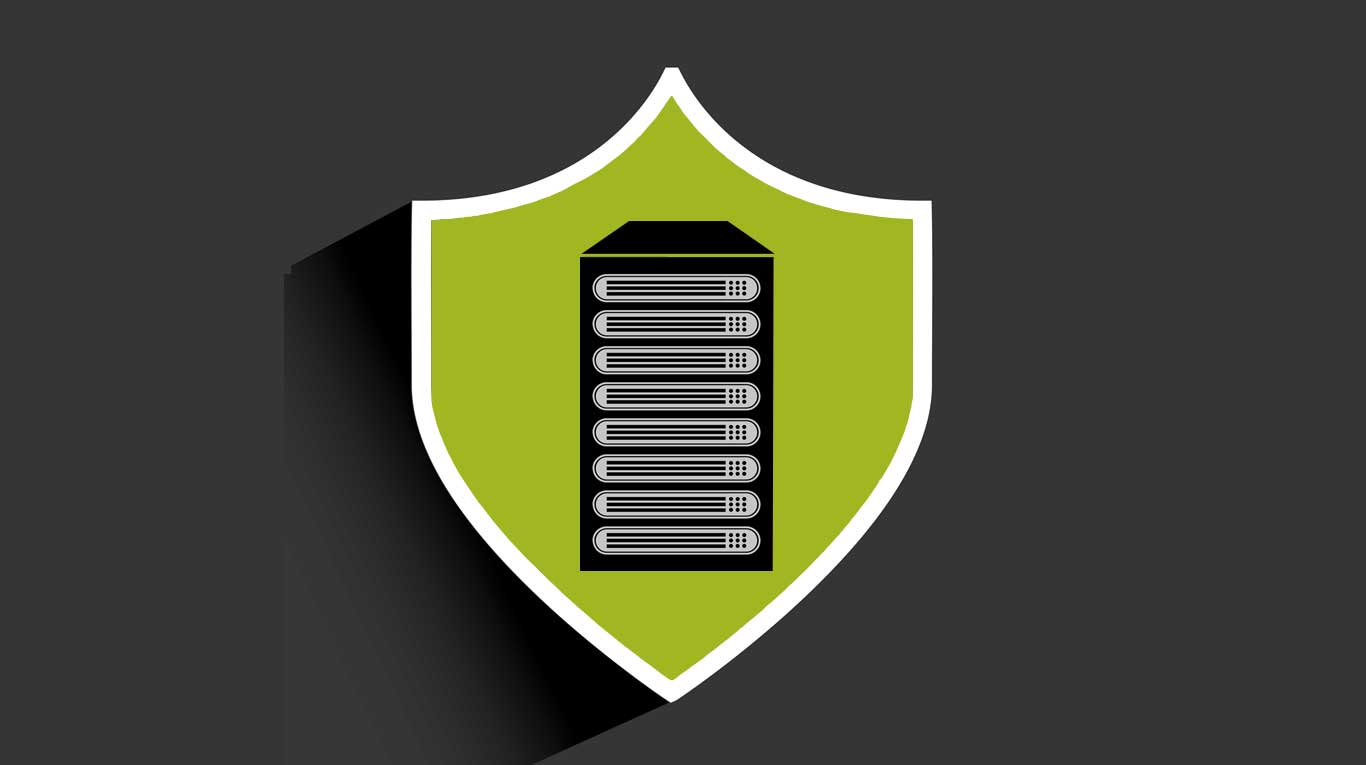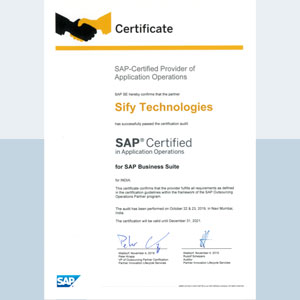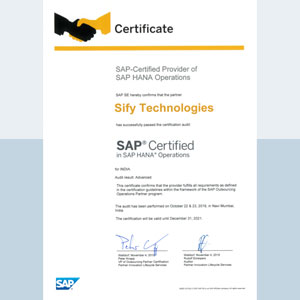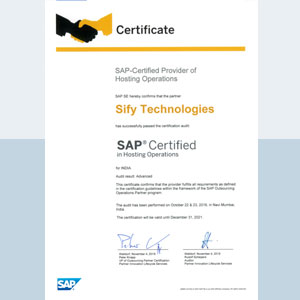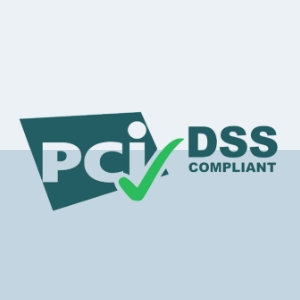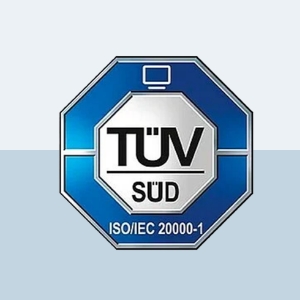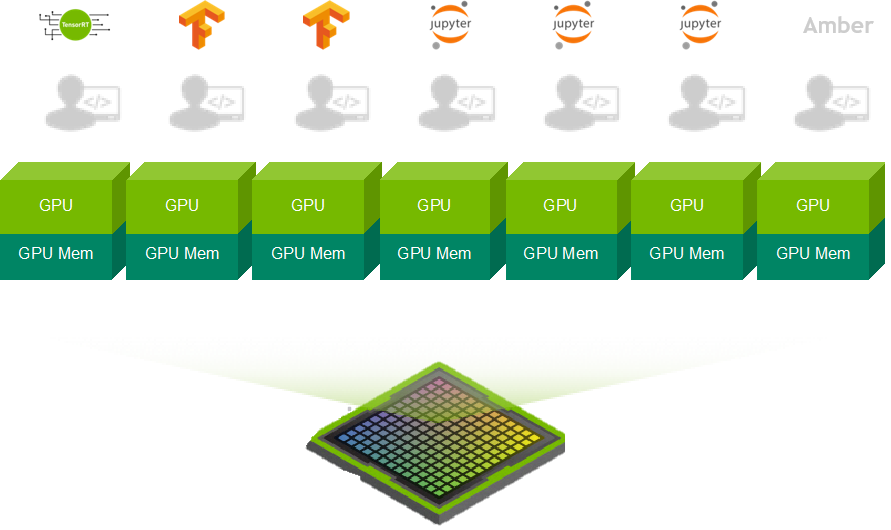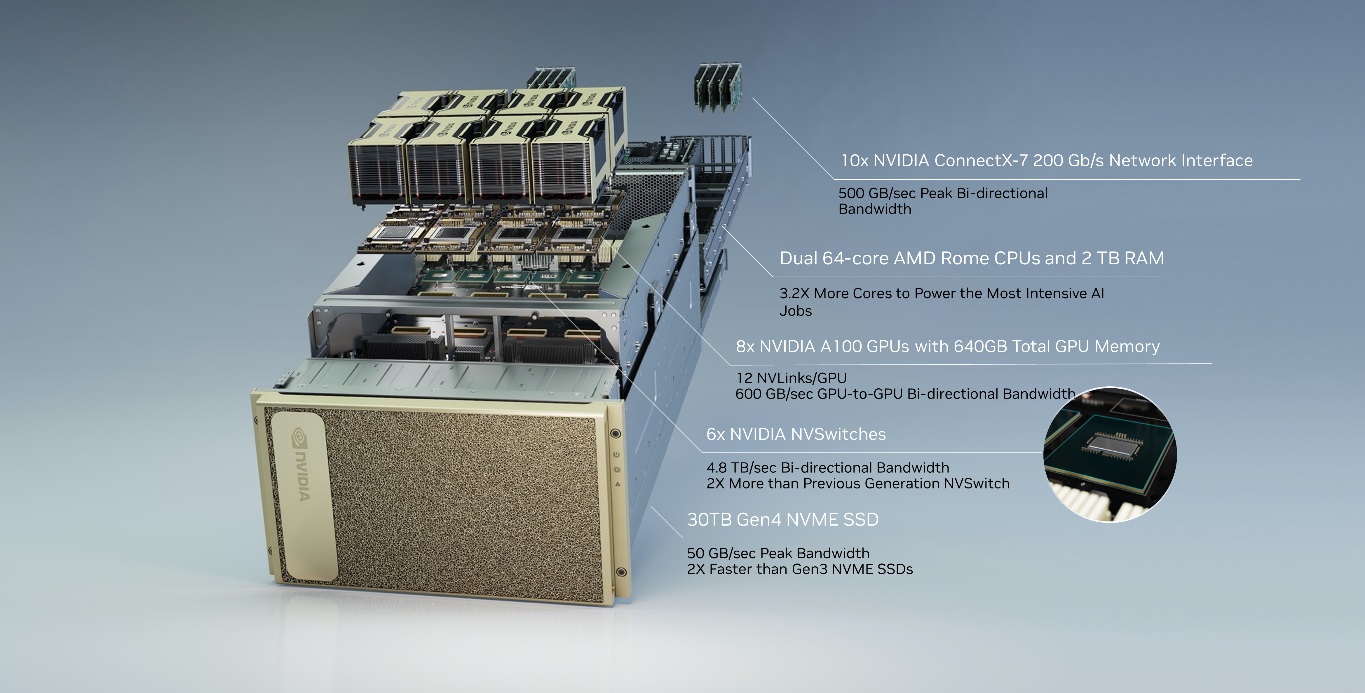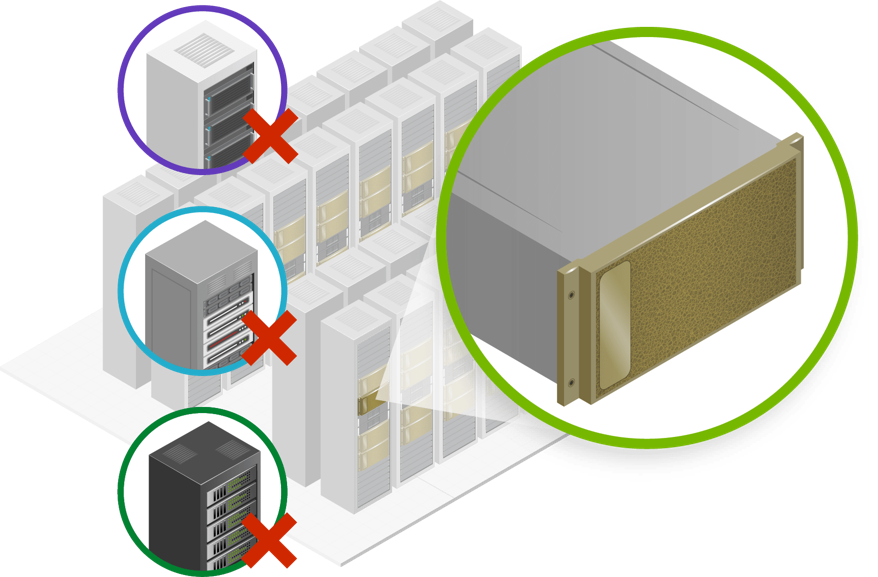Embracing the Software-defined Data Center
With the Data Centers becoming more crucial to meeting the business requirements of organizations, older technologies are lagging behind. That’s why the savvy business professionals are embracing the software-defined Data Centers that extend the advantages of automation and orchestration, simplify management and provide a more business-focused approach.
Take baby steps
Designing software-defined environments often implicates re-evaluating business processes and operations model, ranging from automation and orchestration to service activation and user experience. It is often suggested that companies have to transform the whole Data Center operations, which seems daunting but in fact, is not necessary at all. You can simply begin your journey in the SDDC environment with small steps by starting projects that are associated with low-key services that address only one aspect – networking, computing or storage. If you start small with projects that are not mission-critical, your IT gets an opportunity to adapt and filter processes for the next project, hence shaping SDDC expertise without exposure to any business risk.
Skilled IT team is vital
In SDDC, it is imperative that the IT team has the capability of comprehending the automation and orchestration of systems. The technologies in a software-defined Data Center are generally vendor specific. It is crucial for businesses to choose platforms that can be conveniently and skillfully managed by the IT team. It is always better to consider in-house expertise rather than modifying the team for unfamiliar technology and spending a fortune on training and support.
Consider the IT role
In the age of software-defined Data Centers, businesses don’t run IT processes in silos, as they used to earlier. Since the data is coordinated at a higher level, there is no longer a need for separate groups for networking, storage, applications and servers. SDDC offers more applicable information gathered from various components and distributes it across IT for better operations and management. Server uptime, storage efficiency and security are significant. So are the prompt IT systems upgrade and completion of task to the user’s satisfaction. In the new scenario, the role of IT will shift dramatically. IT will have to optimize and deliver services as per SDDC standards on a virtualized infrastructure.
Use metrics for the business
Agility is the top-of-the-line driver for IT and in an SDDC infrastructure, businesses can notably crop down the time to deploy, upgrade and even fine-tune a user service. Metrics are critically valuable. In an SDDC-oriented environment, businesses are able to increase the speed of diagnosing issues. This enables them to adapt quickly to real-time demand, simply by measuring request and response times between servers and clients. Further, they get the opportunity to move storage resources with zero downtime along with the ability to scale infrastructure sans the user downtime. Ease of use, user satisfaction, moving workloads easily, re-purposing infrastructure for hosting various apps and the total cost are the metrics that can showcase that your business can be more agile and efficient in software-defined Data Center.
SDN – Bringing flexibility and scale to Data Center
Today’s growing businesses need instant application deployments and deliveries at a much higher speed. While it is a major challenge for IT administrators, Software Defined Networking (SDN) has helped organizations to achieve this goal with the help of automation tools. SDN helps businesses to achieve flexibility and scalability with the platform that can efficiently handle the demanding network needs of present and future growth. SDN has made deployments of applications and business servers more speedy and agile. Cloud architectures are able to deliver automated, on demand application delivery and mobility on a scale required by SDN. SDN helps enhance the benefits of Data Center virtualization by increasing resource utilization and flexibility, thus reducing the overhead and infrastructure costs. SDN has a great contribution in converging management network and applications into an extensible and centralized orchestration platform, that can perform automation tasks of provisioning and configuring the entire infrastructure. This assists businesses in building a modern infrastructure, that can fulfil the demand of delivering new applications and services at a much faster pace than possible now.
With the legacy architectures and operating models, current Data Centers are finding it difficult to scale as per the required demands of today’s bandwidth hungry mobile data applications and consequent huge increase in traffic volume. Disaggregated virtual Data Centers and the multi-tenancy trend is creating further challenge in application deployments, delivery and provisioning. Operators need more capacity with the flexibility to allocate resources dynamically – to when and where they are needed most. Current demands need enhanced efficiency and networks that can dynamically adapt to the surroundings. The new SDN technology is the perfect solution for these problems. SDN by abstracting network elements, creates an open environment where network resources can be orchestrated to provide a fast, open, scalable and flexible network that is simple to manage. SDN solutions increase network efficiency by taking transformations from Application Layer and using that data to control network with increased application responsiveness.
SDN allows network administrators to have programmable, centralized control over the network traffic, without having actual access to physical network devices. It separates the control plane from the data plane and thus allowing external control of the network. Separation of the control plane and the data plane allows top level decisions to be made from management device with the knowledge of network, without having device centric configurations. By separating the control plane from the data plane, SDN makes the network, programmable and uses SDN controller to program switches, using industry standard protocol like OpenFlow.
Network orchestration and virtualization are the key to SDN that helps achieve flexibility. The most important goal of SDN is to implement flexible networks that can be provisioned dynamically. Network orchestration, network programmability, network virtualization and centralized control are the major factors that define SDN.
SDN and Network Orchestration
SDN is basically a mesh of technologies to control network hardware. Network devices have network operating systems which manage the internal device operations. SDN needs network operating systems to offer API that allows external software to configure the device. SDN applications use a network controller as a gateway, in order to access APIs on the devices. OpenDaylight is the most popular and widely available gateway. The consumption of the APIs offered by devices, enable the offering of end-to-end configuration services across many network devices. Orchestration can be described as the use of automation to provide services, by using applications that drive the network. Orchestration is the most important factor in Software defined network.
SDN and Network Virtualization:
IT operators are finding that network performance could be a bottleneck to deliver speed, agility and bandwidth that is required for today’s modern application. SDN and Network virtualization, along with other solutions like 10Gigabit Ethernet and Ethernet fabrics, are amongst the technologies that can efficiently address the problem of network performance and provide agility. Data Centers are required to handle more data and transactions resulting in network growth and expansions, which add significant complexity in IT provisioning and management. Network virtualization and SDN provide a solution to network architectures that they can use to design models that efficiently cater to demands of the business critical applications.
Implementing Network virtualization with SDN, IT operators can add flexibility and scalability to current network management. SDN based network virtualization decouples virtual network from the physical network. Today businesses demand quick virtual network deployments with diverse requirements and need most of the network functions to be automated. There are numerous ways network virtualization can be defined in SDN.
How SDN provide network flexibility and Scale?
Software defined networks provide flexibility to configure, secure, manage and optimize network resources using automated SDN programs. APIs offered by network systems of devices, facilitate the implementation of common network services such as routing, security, access control, multicast, bandwidth management, storage optimization, energy usage and allows policy managements. SDN provides much flexibility that allows network programming and management at a scale which traditional networks failed to provide. SDN, by decoupling Control and Data planes result in advantages such as high flexibility, programmability and a centralized network view. SDN is considered to be a solution to provide a flexible and scalable architecture. SDN offers higher opportunity for programmability, network control, automation and thus allows network operators to build highly scalable and flexible network, that quickly adaptable to changing business needs. It provides flexibility with new network capability and services that does not require to configure individual devices or does not need to wait for vendor releases. Centralized control and management of network devices improve automation and management. Centralized and automated management of network devices result in fewer configuration errors and increased network reliability and security.
SDN is the solution for future networks to become significantly intelligent, scalable and flexible. With the help of SDN, network virtualization and network orchestration, it offers network architects an opportunity to provide a truly innovative, flexible and scalable network solution, that will be more efficient and cost effective.
12 steps to successfully grow your business with existing clients
Growing your business with existing customers is the cornerstone of sustained success. It was observed among the top 5 companies in IT services, the ones which did a better job of growing existing customers, outperformed their peer group in overall business growth and profitability consistently over a 10 year period. With the initial investments in customer acquisition, building relationships & setting up infrastructure, incremental business from existing clients is significantly more profitable than winning new clients, as it requires incurring all the initial costs again. This is the reason why your cable, phone or security provider will reduce prices for you rather than have you leave for a competitor.
- Deliver the first experience well: This is the time to build relationships. Your client is getting the first experience with you at a time when exit barriers are low. The quality of this initial experience can create significant stickiness for the future. Failure can not only shut future doors for you, but also open the door for competitors. Invest overtime, effort to engage and make a success of this first experience.
- Grow first in your existing program: If the experience has been good, existing relationships are significantly easier to leverage compared to building new ones. Focus your near term growth plans on the existing area, in which you are already engaged.
- Dominate your footprint: Be the key player and the trusted partner in your current area of engagement. Fractional players are easy to dislodge. Focus, perform and grow in the technology, process, or business area in which you are already engaged. Be the partner who your client turns to and one who is integral to their success. The more critical you are to their program, the more your clients are vested in making you successful, as their success is intricately linked to yours.
- Make your client a reference: Existing clients can be great sponsors, helping you grow business in other areas within their company. To enable that, educate your referrer on what you want to sell, to whom, and why. This will let them understand your proposition and speak with conviction, should they choose to refer you. Win the confidence of your referrer first. Make him your salesman!
- Create your budgets: Budgets, especially the “run the business” areas, are constantly squeezed to free up resources for funding new initiatives. Take the lead and drive productivity in your existing area, freeing up funds for your client. While it may cannibalize your existing business, it will significantly raise your standing. It will position you as a partner who is thinking of the client’s goals and as a preferred partner for opportunities in new areas of spend.
- Upsell and drive value: The essence of upsell is to make a bigger impact on your client’s business goals. Understand the goals of your client and what makes a difference to their business. As you build that knowledge, repurpose your skills and deliverables, to deliver a bigger impact to your client’s G&O’s and business.
- Cross sell contiguously first: Your reputation and track record are most relevant in the area where you are already performing well. It will carry most weight in the adjacent process or technology streams. If you have done a great job with ERP systems, aim to extend into bespoke development or maintenance. Chances are the buyers are likely to be connected and your track record in an adjacent technology will lend credibility. It will take longer to make the leap into say BPO or infrastructure management, even if you have strong company credentials there. The buyers and the work there are very different from the applications side work in which you have a good reputation. First aim to grow contiguous to where you have demonstrated success and spread systematically.
- Engage actively and be a good listener: Engage actively with your clients. Solicit opportunities to learn about their businesses. Get feedback about your performance and standing as well as insights into new opportunities. The more you listen, the more you will learn and identify opportunities to get better and new areas to grow in.
- Ensure continuous communication: You are your best spokesperson. Regularly let your key stakeholders know what you have accomplished. Look for forums beyond your existing touch points and message to adjacent and senior levels as well. Each of them can be sponsors, buyers or influencers in the future.
- Crises are opportunities: In the course of any relationship, things may go wrong. All mature buyers understand that. What’s important is how you deal with the crisis. Be responsive, constructive, engaged and focused on resolutions and results. If anything, take on greater ownership of than you are contractually obligated to. These are great opportunities to demonstrate that you stand by your clients when the chips are down.
- Keep your eye on the ball: However successful you are with a client, that success has to be earned every day. Keep your eye on the ball and ensure that existing programs and relationships get focus and you deliver consistently.
- There is always room to grow: Even if you have a dominant share of business with your client, there are opportunities to grow. Technologies change, processes change, regulations change, markets change, M&A’s and divestments happen. Your client is an organic, living, breathing entity and change is ongoing. Each change creates new opportunities to engage and grow.
In closing…
Growing with existing clients is the secret sauce of the most successful companies. It is also the most profitable avenue for growth. To ensure success with your clients, focus on delivering to your promise and making them your references. Actively engage to understand where your client’s business priorities lie and how you can help in successful outcomes. Grow in your existing engagement first and then into contiguous areas. A track record of performance and constructive engagement opens up new avenues for growth in other parts of the business, new areas of spend, and as your client transforms their business.
Why Data Centers are Necessary for Enterprise Businesses
Data is the most critical asset of any organization and businesses are faced with the imminent challenges of managing and governing data while ensuring data compliance. Data management is critical for every company to improve business agility with up-to-date information available anywhere, anytime to the employees who need it most. There are entire ecosystems that grow perennially around Big Data and Data Analytics, which make enterprises aim for significantly critical tools to manage everyday data.
With businesses realizing the dynamism of what can be done with their data, they are moving on from their existing resources to well-equipped Data Centers to aid better data management. Data Centers have become top priority for businesses across the globe to measure up their IT infrastructure requirements. With this shift in addressing information, Data Centers have moved beyond being just an additional storage facility. Infact, they have emerged as a key business parameter. Here is why Data Centers are necessary for enterprise businesses.
Consolidated Leadership: As an enterprise business, you have to recognize the potential in terms of leading, managing and governing your organization. Therefore, you should consider the enterprise level IT infrastructure provided by a potential Data Center service that helps your enterprise with lesser makeshift in different parts of the business. This results in consolidated leadership, centralized management and a stable governance approach to help better business decision making, for the benefit of the entire enterprise.
Reduced Barriers: Enterprises have so many facets and managing each aspect of the business is quite demanding. With the common goal being the customer, every segment of the enterprise shares the same business processes, ideologies, investment plans and capital expenditures. But due to its enterprise nature, the business is often dispersed in terms of location, products and services. This results in lack of engaging the customer across various operations of the company. With an efficient Data Center solution for enterprise business, you can reduce barriers to internal operations that affect customer service. With a convenient data management and flow, managed hosting services offered by an expert provider, will help you strengthen your ability to engage the customer across your operations.
Higher Margins: Enterprises are increasingly recognizing the growing importance of a Data Center. Investing in a tactical Data Center solution will help enterprises avail scale cost, data security and service efficiencies. Data Center service providers enable enterprises to customize solutions as per local requirements without compromising on the elemental course of the core business process. With the expansion of business, enterprises have to take account of additional resources. But with Data Center solutions, you can leverage the technical resources promptly and cost-effectively. In addition, if you require fewer systems or less storage, your provider will simply reduce implementations as per requirement. It is one of the major reasons why enterprises go for vendors who offer services, with costs incurred as per their service usage.
Data Storage and Management: Data storage needs consistently increase in an enterprise and keeping pace with the requirement surge, Data Centers continue to push the horizons of tangible capacity. Innovative ways of data management and storage are being introduced by Data Centers that instigate more enterprises to branch out into the utilization of Cloud Computing. Data Centers as well as companies are focused on meeting data storage demands that integrate both cloud and physical storage capabilities. This shift in the technology is at the cusp of driving M&A activities resulting in exponential growth in data gathering and collaboration that further enhance the need for data storage.
Safety: Given the sheer amount of data accumulation and transaction in today’s competitive environment, data security has become the top priority of every enterprise business. It has become imperative for every company to put efficient systems in place that are not only updated frequently but also monitored regularly. Constant monitoring of the systems allow you to maintain its security as potential risks and attacks are detected at the earliest. That’s why enterprises rely on third party Data Center solutions with expertise and monitoring processes to identify risks and breaches within the required time frame to be able to deal with them effectively. Most vendors offer multi-tier infrastructure setup, to effectively secure valuable data of enterprises. Besides technological security of the data, vendors also emphasize on physical security of the Data Centers, ensuring surveillance, access management, intruder alarms and physical security systems. Moreover, quick recovery processes and data retrieval in shortest turnaround time are also offered in times of environmental disasters.
Better Growth Opportunities: Most enterprises are embracing Data Center solutions after understanding the crucial role data plays in the growth of their ventures. With the advancement, Data Centers bring in the business and technology realm. And enterprises are increasingly becoming aware of managing their company from the prospect of fetching more resources to utilize high potential and growth opportunities. Your business can leverage the scale, to dominate the market with the assistance of a competent Data Center service. All you need is a proficient vendor who can help you monitor and control your data with a robust infrastructure, by automating and integrating Data Center management.
5 Cool Features of the Next Generation Data Center
The relentless growth in the volume of data created every day, has compelled Data Center administrators to integrate new technologies and processes. With the global popularity of cloud computing, the role of Data Centers has extended beyond providing enough storage capacity with data security. Data Centers – optimized with various tools and services, are now transformed into strategic business assets. Here are five cool features of next generation Data Centers.
Software Defined Data Centers (SDDC)
In IT, everything is literally virtualized and delivered as a service. And the virtualization of Data Centers is the next logical step. The virtual layer is taking over in Data Centers, making them flexible, highly secure and extremely agile. Infrastructure and network, both are not just virtualized in a software defined Data Center but are delivered as a service also. Many mainstream mega-scale Data Centers are moving forward to gain edge with software-defined Data Centers.
Data Center Operating Systems (DCOS)
Data Centers have a diversified need for an extended control layer and the interconnectivity in Data Centers depend upon Data Center management. Many providers deploy Data Center operating control layers that manage resources, users and virtual machines to meet the needs of improving scalability of management infrastructure. Aiming at greater scalability, Data Centers are now better equipped for controlling various crucial components ranging from chips to cooling systems. The DCOS layer has considerably enhanced infrastructure due to its integration into every critical aspect of every Data Center.
Infrastructure Optimization with Agnostic Data Center
The next generation Data Centers will have layered management tools that can pool resources logically as per required workloads. This kind of infrastructure will only be obtained with an agnostic Data Center that lets admin to create more powerful and scalable cloud platforms. The Data Center will become much more abstract and with infrastructure optimization, vendor lockdown can be prevented. Moreover, administrators get to manage traffic influx while leveraging hardware and software optimization. In future Data Centers, what will matter is that you smoothly present resources to the management layer irrespective of the kind of hardware deployed, enabling clients to integrate with outside technologies, flawlessly.
Better Control Layers
Each Data Center hosts a diverse variety of systems. Therefore, the control layer also needs to be greatly diversified. And since the management console integrates into APIs, it can grow exponentially to keep pace with the increasing Data Center footprint. The new-age Data Centers allow API integrated management consoles to render the big data clout, manipulation and management along with allocation of resources. Furthermore, you can even vie for better multi-tenancy options and optimum cloud scaling by embracing API integrated networking technologies.
Greater Logical and Physical Automation
With the continuous enterprise popularity of cloud computing, vendors lose sleep over supplying application performance and predictability. It is not easy to achieve a fully functional, automated Data Center environment. Hence, introduction of robots in Data Centers will be one of the most basic features of next generation Data Centers. It will provision the resources more actively.
How secure is your Data Center?
Data Center is the core of today’s IT world. With growing technologies like cloud computing, virtualizations and latest IT applications, building today’s Data Centers are a bit more complex. It is important to protect Data Centers from malicious attack. Equally important is to ensure that the Data Center infrastructure like network, storage, servers and desktops too are secured and monitored all the time to avoid any possible threat. Traditionally, network teams would secure network and applications with encryptions. However with today’s growing IT requirements, it is important to have more robust and dynamic security systems to secure the Data Center.
Data Center security is of primary importance to IT organizations. Organizations should make sure that every element of Data Center is monitored and secured. They may either decide on managing it on their own or opt for outsourcing. However they should carefully evaluate the options that is suitable for optimally securing the Data Center.
Access Control methods for Data Center
Physical access to the Data Center should be carefully planned and managed. Entry to the Data Center should be restricted with limited access. Only Authorized person should be allowed to enter Data Center – with badge access to the building and security-escorted entry to the visitors. Additional Security layers can be added by separating Testing, Development and Production zones. Depending upon the sensitivity of the data in the server, access to each zone should be restricted with key card admittance and biometrics. The entire Data Center should be under video surveillance.
Network Security
Network is the backbone of your IT infrastructure when security solutions are planned. It is important to implement security methods zone wise. The Production Zone where you have all your mission critical data should have strict rules implemented for incoming and outgoing traffic. The Development Zone may have a less rigid environment. The Testing Zone environment should be isolated from random traffic of Development Zone. There should be a physical separation between internet accessible servers and other infrastructure.
Data Security
Data Security should be separated from Server Security. Different servers handle different type of data and security rules should be implemented accordingly. Firewalls should be setup to separate the access to different data. The firewall rules should be implemented and configured depending upon the access levels required for each type of data. Moving data should be scanned for potential privacy leaks and it should be ensured that data goes to right person and is properly encrypted. Encryption policies should implemented with software encryption. Patching programs should be implemented regularly to avoid vulnerabilities on the servers.
Application Security
Today’s IT applications are big with complex architectures and it is important to take care of application vulnerabilities before it goes into your production systems. Applications must be scanned for vulnerabilities that hackers can easily exploit. The reported vulnerabilities should be rectified and proper security metrics should be applied before any application goes into production. Developers should run their own code through a code scanner that scans the source code for buffer overflows and other vulnerabilities. Before it goes into production, it is important for both code scanning and application scanning for all possible vulnerabilities.
Cloud and Virtual Network Data Security
Organizations need to focus on securing the cloud based, virtualized network and storage as well. Virtualization has added new security issues. Virtualized network can be separated and isolated so that different set of rules can be implemented to manage the security. The host based security systems can be implemented to monitor virtual machines and network, to detect any malicious activity. Within a virtualized Data Center, administrators can compare and analyse client to server traffic to check the legitimate traffic. Cloud computing requires a different security approach. Hence security methods need to be implemented to ensure the data flow between Data Centers, Client Systems and Data Centers and between Virtual Machines within the Data Center. It is important to ensure that these flows and not carrying malicious traffic. Good coordination of networking devices, firewalls, SSL devices and intrusion prevention solutions can ensure a robust security for cloud computing environment.
Overall, a good Access Control System, Fenced off Boundary, guards to control Physical Access, Video surveillance, Network, Data and Application Security measures – all implemented together can form a robust Data Center security system.
Advantages of Integrating Cloud with traditional Data Centers
A growing number of organizations are adopting cloud computing to meet the challenges of deploying their IT services as fast as they can and addressing their dynamic work load environment there by maximising their ROIs (Return on Investments).
Across the globe companies have started to view hybrid cloud as a transformative operating model – a real game changer that presents the wealth of opportunities to businesses. The two mantras which helps you to follow while adopting this technique is Enhanced agility and Overall cost savings.
Cloud computing help’s the users to access the IT resources faster than the traditional Data Centers. It also provides improved manageability requires less maintenance. This technological service also helps the users to access the resources they need for a specific task. This not only prevents you from incurring cost for computing resources which are not in use, but, improves the operational efficiencies by reducing cost and time.
By adopting Cloud computing, businesses can rapidly integrate and deliver services across the other adopted cloud environments and thereby improving business agility so also lowering the costs. Once businesses recognize this they need to choose the cloud computing option that best fit their business requirements.
Like public cloud model, private cloud models also offer seamless access to applications and data with minimal IT support. But in private cloud the service will be offered only to a particular organization. Two common types of clouds are Integrated stack and Custom cloud. The key benefit of integrated stack is pre testing and interoperability to reduce operational risks and faster deployment time as the stack is most often delivered as a single bill of material. And the importance of custom cloud is, a modular plug & play approach that allows organizations to build cloud infrastructures in smaller increments, adding capacity when needed.
Hybrid model is a combination of public and private cloud models. Now a day’s every organization started looking and adopting it due to its cost benefit. Getting into a hybrid model and the key to success is, understanding how to get started on your hybrid cloud. First of all you need to know the integration method. The dominant strategy in creating a hybrid cloud that ties traditional Data Centers with public cloud services involves the use of a front end application. Most companies have created web based front end applications that give customers access to order entry and account management functions, for example, many companies also used front end application technologies from different vendors to assemble the elements of applications into a single custom display for end users. You can use either of these front end methods to create a hybrid cloud.
The front end application based hybrid models, the applications located in the cloud and the Data Center run normally; integration occurs at the front end. There are no new or complicated processes for integrating data or sharing resources between public and private clouds.
A business can choose from a vast array of potential organizational structures. Lateral organizations, top down organizations and other type of organizational structures can all be combined into a hybrid structure. This allows a company more flexibility in distributing work and assigning job rolls. It can also be beneficial in small businesses where there are fewer employees to manage daily operations.
Hybrid structure also helps the organization to choose Shared Mission where it creates a shared mission and allows it’s employees to work on a different projects and in different sectors. This structure creates a unified team of individuals with a common goal and different experience and interest levels. Each employee is able to perform work in the areas he/she best suited to, moving from project to project and reporting to different individuals as and when it is required.
Another example of hybrid structure is Market Disruption, through which when an organization adopts itself into a market and overcomes traditional barriers of the market such as advertising budgets that could cripple financially smaller organizations. Here considering the B2B perspective, this structure can ride the wave of market disruption to a peak of creating a massive media blitz that fuels product development and demand.
The next benefit to the hybrid organizational structure is the Massive Scale that can be reached by its use. Instead of having a top heavy, traditional structure of management and employees, a hybrid organization uses a spider web based structure involving groups of individuals, sometimes in different geographic areas, working together to accomplish shared goals. This also removes the problem of distribution pipelines slowing down access to the finished product.
Ease of maintenance is another attractive characteristic. It is because cloud computing architecture requires less hardware than distributed deployments. Fewer dedicated IT staff members are necessary to maintain the integrity of the cloud’s infrastructure particularly during peak hours.
Cloud computing also supports the real time allocation of computer power for application based on actual usage. This allows cloud operators to meet the demand of peak load hours accurately without over provisioning, increasing the clouds efficiency while freeing up additional capacity for on demand deployment. From an IT perspective, support for rapid provisioning and deployment is another attractive characteristics that appeal to growing enterprises.
Cost reductions, easier implementation & maintenance, and a better flexibility are the significant benefits of cloud deployment.
Operating costs are controlled by a good design and implementation of the same. Over the long term it is very critical to optimize both capital and operating expenses. Every industry has its own leaders, with a unique jargon and cultural conventions that B2B marketers must take into accounts.
Ways to Ensure your Data on Cloud is Safe & Secure
https://www.sifytechnologies.com/dc-services/Managing your data on the cloud offers myriad benefits to your business. But like any other technology, cloud computing also has its share of risks involved. When considering a move to the cloud, consumers should get familiar with the potential security risks.
There are a few security and privacy challenges relevant to cloud computing and if you have a clear understanding of them, you can safeguard your data against them. Both you and your cloud service provider have responsibilities that address the potential risks. Here are the things to consider to ensure data security:
- You should implement a tiered protection layer for your data to create a security model that includes a multiple perimeter rings of defense. Different layers of defense will safeguard your data from both, internal and external threats.
- Make sure you manage authorisation process. Create a coherent hierarchy of people or departments that have access to your data on the cloud. Moreover, deploy a program to review access trails. Ask your cloud provider if there are process and functionality that control who has access to the data. Work with a provider that offers a cloud environment that is controlled and managed.
- Secure networks and connections are another imperative when choosing a cloud provider. You must evaluate the type of external network controls offered by the provider to distinguish authorised traffic from the unauthorised one. And you should do the same internally as well.
- Evaluating physical infrastructure and facilities of the cloud provider for security controls is extremely important. The physical infrastructure is managed by the provider and you must get assurance from them regarding security in the facilities. Your service provider must have mandatory security controls on their human resources.
- Authorised personnel and physical security are not the only concerns, you should also ensure that the facility is protected against external and environmental threats. Check with the provider whether or not appropriate facilities are in place to make sure that services will continue in case of equipment failure or environmental threats.
- Scrutinising application security is another important aspect, specifically in SaaS deployments. While the cloud provider has the liability of application security, it is imperative that you know all about the security measures taken.
- Go through the security requirements of the exit process. In the event of the termination of service, the consumer must be provided with a smooth transition of data, without any loss or security breach. Make sure the exit process is properly documented in the contract to provide security during the transaction.
The greatest security concern for any business is to pick the right provider. Keeping your data safe is as much the concern of the provider as it is yours. Therefore, you must ensure that you choose a provider that takes data security as a priority so that your doubts are put to rest.
Benefits of Managed Cloud Services
Cloud computing is taking shape as a fundamental to business growth. Between the fray of private and public cloud, managed cloud services can help businesses maximize the benefits of cloud adoption. Managed cloud hosting provides the balance between scalability and facility of public cloud and better reliability of on-premises solutions. Managed cloud solutions are considered by many businesses because of the cost-effective and well-managed computing resources, IT efficiency and flexibility. Any business focused on devoting more time to business process than IT should consider the benefits of managed cloud services.
Customization of the solution
Depending on the requirements of each business, the managed cloud solutions are completely customizable. They are designed and implemented by the providers to meet the requirements within the industry a business operates. This is so because the provider who can diligently monitor the way client manages the cloud solutions uses the solution. It is an important factor in getting technical details to further ease the process that is brought about by the technical nature of the cloud solutions.
Improved deployment of the solutions
Managed cloud solutions have become crucial to business processes and are evolving at a faster rate. The managed service providers can track the technical information about the usage and the programming interface of their cloud services. Since managed cloud service providers have the ability to monitor the usage of their solutions and their response time, they constantly improve the design and deployment of the services.
Better system availability
Another advantage of managed cloud services is better availability at increased speed. Your cloud-hosting provider offers high-speed cloud resources that give you the leverage of mining through massive amounts of data at a faster pace. With optimum bandwidth, data storage and uptime, you can rest assure that your online processes will go on uninterrupted even with heavy loads. The speed and agility of managed cloud solutions will assist you in focusing on your core business strategies, making your customers happy and expanding your business.
Increased reliability
With managed cloud solutions, you will be provided extremely reliable services because the provider maintains control and is capable of clearing up the issues in the system right away. The provider ensures that the infrastructure is functioning at optimal levels and identifies potential threats. Since a managed cloud solutions provider carefully administers the cloud, consumers get reliable services they can trust their data with.
To garner the many benefits of managed cloud solutions, teaming up with an experienced provider is of utmost importance. You must work with a provider that is architecturally sound and has reliable infrastructure with expertise in different cloud administration functions from configuration to ongoing maintenance.
How the start-up industry can benefit from cloud computing
India has been gripped by an intense wave of start-ups. From tech solutions and e-commerce to healthcare and food deliveries, these start-ups are being embraced more and more by Indian consumers and also attracting a substantial amount of attention from foreign shores in the form of angel investors and venture capital.
For the 50 million or so start-ups and small businesses in India, cloud computing is set to be a game changer. The need to stay a step ahead of others is what’s causing Indian companies to finally approach cloud service providers. Moreover, cloud computing is on the brink of an explosion in India.
While there had been reluctance in adopting cloud solutions in the past, the trend is now changing. According to IDC, the cloud computing market in India stood at $688 million in 2012. This very figure is predicted to rise to $3.5 billion by 2016. An IDC survey of 473 respondents resulted in 200 opting for cloud solutions. Cloud computing and its services can give a considerable amount of boost to enterprises in terms of technological stability.
Start-up companies can store, manage, process data and use programs through a web-based interface – something that greatly reduces costs. Data stored in the cloud can be accessed from anywhere through various devices with web connectivity, which is an advantage for small companies that don’t have a huge IT budget. Cloud is not all about storage. Companies can also move their operations and applications on cloud.
Traditionally, a start-up is likely to spend a great deal on computer equipment to kickstart its business. Typical expenses include servers, software tools, database licenses and other IT equipment that are needed to perform tasks like payroll, performance management, paying bills and tracking their sales leads. Moving to cloud drastically eliminates such up-front costs, leaving businesses with more capital at hand to invest on other business plans.
SMEs usually have bad technological infrastructure. Either they have to resort to buying expensive software designed for large companies or build their own cheap applications that lack functions. Moving to cloud is a smart move for any start-up. Cloud offers the flexibility, agility and security required by SMEs at a modest price. The resources that once were limited only to large enterprises are now conveniently accessible as well as affordable.
On top of that, cloud computing enables businesses to get up and running promptly because of swift services and professionally-arranged infrastructure. With cloud, SMEs get access to experts doing what they do best. Cloud services are bringing a balance to this field and start-ups can be the harbinger of this technological change.






